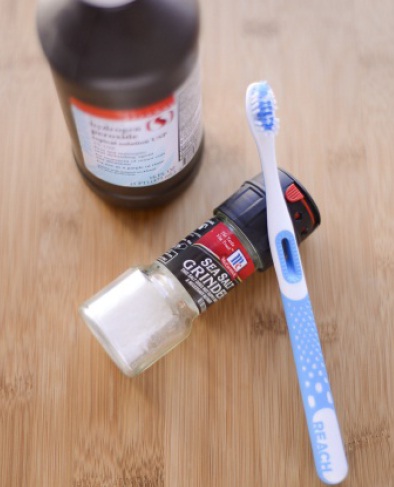





Published on Sep 12, 2023
This experiment will evaluate bacterial content on toothbrushes before and after cleaning to determine which method of disinfecting is best.
Which method of disinfecting toothbrushes kills the most bacteria? Bacteria can build up on toothbrushes over time. There are many products that are believed to help keep your toothbrush bacteria-free. In this experiment, you will evaluate several methods that can be used to clean toothbrushes to determine which is best at disinfecting.

1. Computer
2. 10 toothbrushes
3. Hydrogen peroxide
4. Hot water
5. Salt
6. UV toothbrush cleaner
7. Antibacterial soap
8. Sterile swabs
9. Sterile gloves
10. Prepared nutrient agar in sterile plates
11. Notebook for recording results
1. Brush your teeth with each of the 10 toothbrushes. Allow all of the toothbrushes to sit in a bathroom (near a toilet) for approximately 4 days.
2. Prepare 20 sterile plates containing nutrient agar.
3. Put on sterile gloves (do not touch any non-sterile surface when wearing gloves).
4 . Swab a toothbrush with a sterile swab (do not touch anything else with the swab).
5. Remove the top of the petri dish. Keep the top of the dish in your hand away from any non-sterile surface.
6. Gently run the swab back and forth in a z igz ag pattern on the surface of the agar plate. Do not touch any part of the agar twice.
7. Put the top of the petri dish back on and label.
8. Change your gloves.
9. Repeat steps 3-8 for each of the
10 toothbrushes using a new agar plate each time. You should now have 10 “before” plates. Be sure to number each toothbrush and write the number that corresponds to the sampled toothbrush on each agar plate. 10. Prepare two solutions of 3% hydrogen peroxide.
11. Place toothbrush #1 and toothbrush #2 in separate solutions of hydrogen peroxide for 2 minutes.
12. Rinse the toothbrushes with water.
13. Repeat steps 3-8 for each toothbrush that was placed in hydrogen peroxide. You should have 2 separate agar plates.
14 . Label each agar plate so that you know which disinfectant was used and which toothbrush was treated. 15. Prepare two solutions of salt water.
16. Place toothbrush #3 and toothbrush #4 in separate solutions of salt water for 2 minutes.
17. Rinse the toothbrushes with water.
18. Repeat steps 3-8 for each toothbrush that was placed in salt water. You should have 2 separate agar plates.
19. Label each agar plate so that you know which disinfectant was used and which toothbrush was treated.
20. Place toothbrush #5 inside a UV toothbrush cleaner for 5 minutes.
21. Repeat step 20 with toothbrush #6.
22. Repeat steps 3-8 for each toothbrush that was placed in the UV toothbrush cleaner. You should have 2 separate agar plates.
23. Label each agar plate so that you know which disinfectant was used and which toothbrush was treated.
24 . Wash toothbrushes #7 and #8 with antibacterial soap.
25. Repeat steps 3-8 for each toothbrush that was washed with the antibacterial soap. You should have 2 separate agar plates.
26. Label each agar plate so that you know which disinfectant was used and which toothbrush was treated.
27. Prepare two solutions of hot water.
28. Place toothbrush #9 and toothbrush #10 in separate solutions of hot water for 2 minutes.
29. Repeat steps 3-8 for each toothbrush that was placed in hot water. You should have 2 separate agar plates.
30. Label each agar plate so that you know which disinfectant was used and which toothbrush was treated.
31. Place the petri dishes in an environment that is as close to 37º C as possible. Bacteria will take longer to grow at room temperature. Ensure that all petri dishes are placed in the same location.
32. Photograph plates at defined intervals of time (eg, after 24 hours, 36 hours, 4 8 hours, 60 hours, and 72 hours, 84 hours, 96 hours, etc…).
33. Count the bacterial colonies on each plate at each time point. Record your results.
34 . Analyz e your data. Look at the bacterial growth in the “before” and “after” plates for each toothbrush. Which disinfectant appears to work best?
Coppens, Kenneth. “How to Grow Bacteria in Agar Petri Dishes”